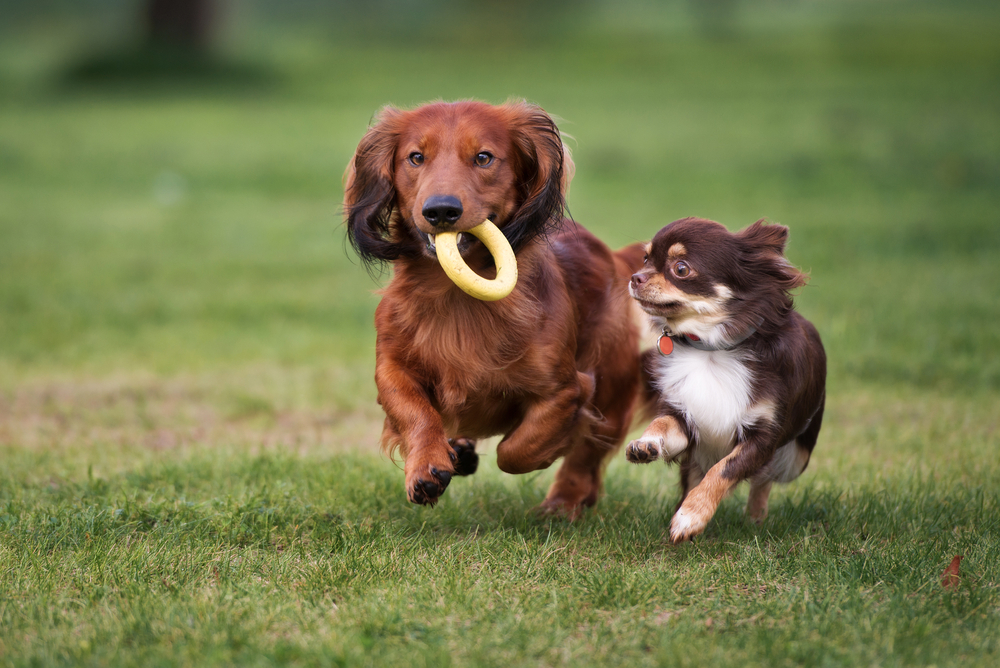Introducing A Second Dog To Your Home
 July 25, 2018
July 25, 2018
Introducing a Second Dog: Understanding the Pros and Cons
Are you considering expanding your furry family by adding a second dog? The team at Pets Training & Boarding explores the benefits and challenges of having two dogs and guides you through assessing if your household is ready for another four-legged friend.
The Joy of Two Dogs
Owning two dogs can be incredibly rewarding. They provide companionship to each other, keep themselves entertained, and enrich your home with additional joy. However, it’s crucial to recognize the right and wrong reasons for bringing another dog into your home to avoid potential problems.
The RIGHT Reasons to Get Another Dog
- Everyone in the household desires another dog.
- You have the time and resources to train and socialize a new puppy with your existing dog.
- Your older dog could benefit from the energy of a new puppy.
- You have thoughtfully considered this decision over time.
- Your current dog is well-behaved and has no major behavioral issues.
- Your dog enjoys the company of other dogs and is ready for a new companion after grieving a lost friend.
Addressing Loneliness
A common reason for getting a second dog is to alleviate your first dog’s loneliness. It’s important to understand that your dog’s loneliness might stem from missing their human family rather than needing a puppy companion. Before getting a second dog, consider these questions:
- Do you have enough time for another dog?
- Why is your dog lonely?
- Should you spend more quality time with your dog?
- Could getting another dog result in having two lonely dogs?
Misconceptions and Timing
It’s a common misconception to introduce a puppy too soon after the loss of another pet. It’s often better to wait until your dog has finished grieving before bringing in a new companion.
Behaviour Problems
If your current dog has behavioral or training issues, it’s essential to address these with professional help before introducing another dog. Unresolved problems can be mimicked by the new dog, leading to double the trouble.
READY SET GO: Introducing Your Second Dog
Once you’ve decided to get a second dog, remember to introduce them slowly and patiently. Dogs, being pack animals, require time to adjust to new pack members. Here are some tips for a smooth introduction:
- Proceed slowly and cautiously.
- Introduce the dogs through a barrier like a door initially.
- Give your current dog time and space.
- Monitor interactions to prevent overwhelming your existing dog.
- Use lots of praise and positive reinforcement.
- Remember, nose-to-bum greetings are polite in dog language.
Adding Another Canine: What to Consider
When considering a second dog, it’s essential to understand the dynamics of having multiple dogs in your home. Dogs, being pack animals, generally enjoy the company of other dogs, but there are several factors to consider to ensure a harmonious integration.
Behavioural Problems
Before introducing a new dog, assess if your current dog has any behavioral issues that need to be addressed. Introducing a new dog could exacerbate existing problems, so it’s crucial to resolve these issues beforehand.
The Right Dog
When choosing a second dog, consider breed compatibility, energy levels, and size. A meet-and-greet with your current dog at the shelter can be invaluable in determining compatibility.
Pups & Older Dogs
Bringing a new puppy home is exciting but requires careful management to ensure both the puppy and the older dog are comfortable and safe. Maintain your older dog’s routine and supervise interactions to foster a positive relationship.
For more detailed guidance and insights, visit Pets Training & Boarding’s blog.
